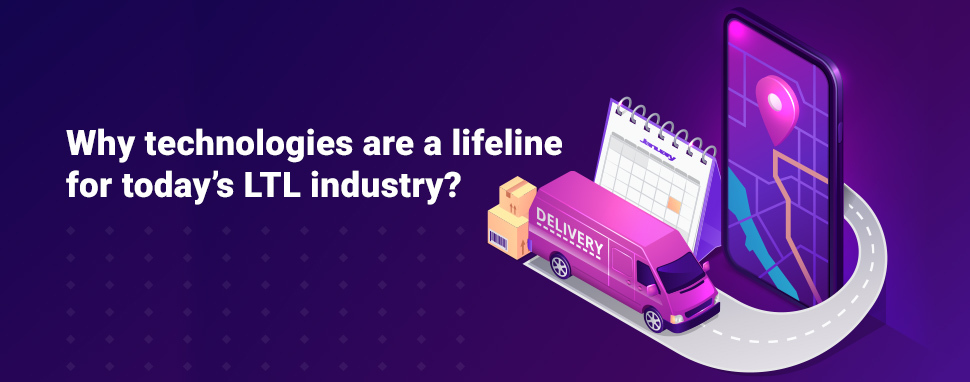
E-commerce has brought revolution in the LTL industry, the demand for faster fulfillment and a rise in E-commerce has declined a shift in the LTL freight landscape over the past decade. It has changed consumer buying habits, also changed the supply chain for less than truckload carriers. You have to adapt the various ways to keep pace. The effect has been remarkable and LTL freight carriers will be adapting to these changes Automation of transport logistics can notably benefit shippers and carriers, various transport management system related apps can work together to streamline freight operations, E-commerce is estimated to be the dominant global retail channel as early as 2022. It is growing at double-digit rates each year, has reached an 18 percent year over year growth in 2018 and global revenue of $2.86 trillion. The future success and even survival of truck less than truckload (LTL) carriers depend on truck drivers, technology and the ability to work more and more closely with customers.
Common Challenges Shipping Companies Face In LTL Industry
The technological changes have impacted far more than the LTL industry, it is disrupting the entire supply chain, force shippers and logistic companies to adjust their business plans, make different equipment choices and relocate distribution centers. To do these things requires more visibility, access to data sets to see where the impacts are being felt.
Paper Work Challenge

Depend on the goods in the consignments and the routes to be covered greatly involve paperwork. Certifications of compliance, pro forma invoices, dispatch notes, clearance, permits, and many such others to move along with the consignments. Papers have to be right for the designated goods, wrong papers may cause problems in transportation, misplaced consignments, delayed shipments, held up driver’s vehicles and legal issues among the few. Ensure the right paperwork is important, as record-keeping is one major challenge for the LTL Industry, no matter what kind of logistics is involved. Make sure the right details are carried by every driver with a minimal time of doing it. In this modern arena, when the world is moving rapidly towards the concept of industry 4.0, papers simply turn out to be just the environmental problems.
Schedule and Tracking trip challenge:
Optimize LTL shipping and trips, make efforts to keep the costs and efforts as high as possible to attain minimum time and competitive billing to the customers. Organizing a trip involves transportation activities based on completed future trips with optimal costs. The shipment of goods is done in consignments, combining multiple destinations, modes and minimum transportation time
Schedule trip ensures optimal costs and minimum transportation time in the LTL industry. Frequently shipment of goods is done in consignments that may combine several destinations and modes. It is necessary to communicate the schedule so that logistics planners are allowed to plan the shipments from the starting point to the destinations. Organize trips, track them and keep the status information up-to-date. Tracking allows to keep a track of LTL Carriers and consignments in them and also offers the ability to provide timely information to the customers.
Route tracking is an important step in route optimization which makes sure that the vehicles travel through to the destination with the optimal cost of transportation and time taken. Traffic condition information to be taken into consideration for the planner as well as the driver to boost the time and cost.
Plan, schedule and track important aspects to ensure actions taken for deviations and contingencies are initiated in time. The real-time tracking of the vehicle is important, and the use of technologies like GPS has become important in this aspect. It is essential to furnish details about goods, sender, transporter and a good receiver. The challenge is to make sure you provide the right details about the goods, the sender and the recipient.
Consignment Tracking Challenge
It is important in 3PL and 4PL logistics that the container and consignment are a plan for the safe, sound and timely arrival otherwise realtime tracking, automation can be a nightmare to realize and achieve. The required details of customer, consignment, container, transportation, and destination must be maintained throughout. There is a long chain involved in transportation, starting from the customer site before it reaches the destination.
![]()
The combinations could vary and the importance of the information does not diminish. It may be feasible for customer consignment to be transported in one or more containers and transported in one or more vehicles, that in the end reach the destination at different times. It must be tracked throughout the transportation cycle, each status of the consignment is tracked as it moves from one point to another in the transportation cycle.
Insufficient Rates
The main benefit of LTL technology in contrast to truckload shipments is less price for transportation. Another side of the coin is to calculate rates that may be hard due to the long list of factors that affect the price.
You can make out from the above article that how important it is to continuously track the consignments throughout the TMS technology. The last but no the least of the expectations from a solution to enable payments, with an ability to visualize the top and bottom lines on the financial side. The cost and time savings result in increased customer satisfaction, and this factor matters most as it increases the profit margins and revenues for the transportation company.
The shipping industry is afflicted with inefficiencies and structural chaos. LTL logistics companies can achieve efficiency, reduce their overhead costs, increase customer satisfaction by adopting mobile technologies supported by solid backend infrastructure. If you want to address any issues, concerns or wants the hands-on experience to automate your LTL freight business, please feel free to get in touch.


